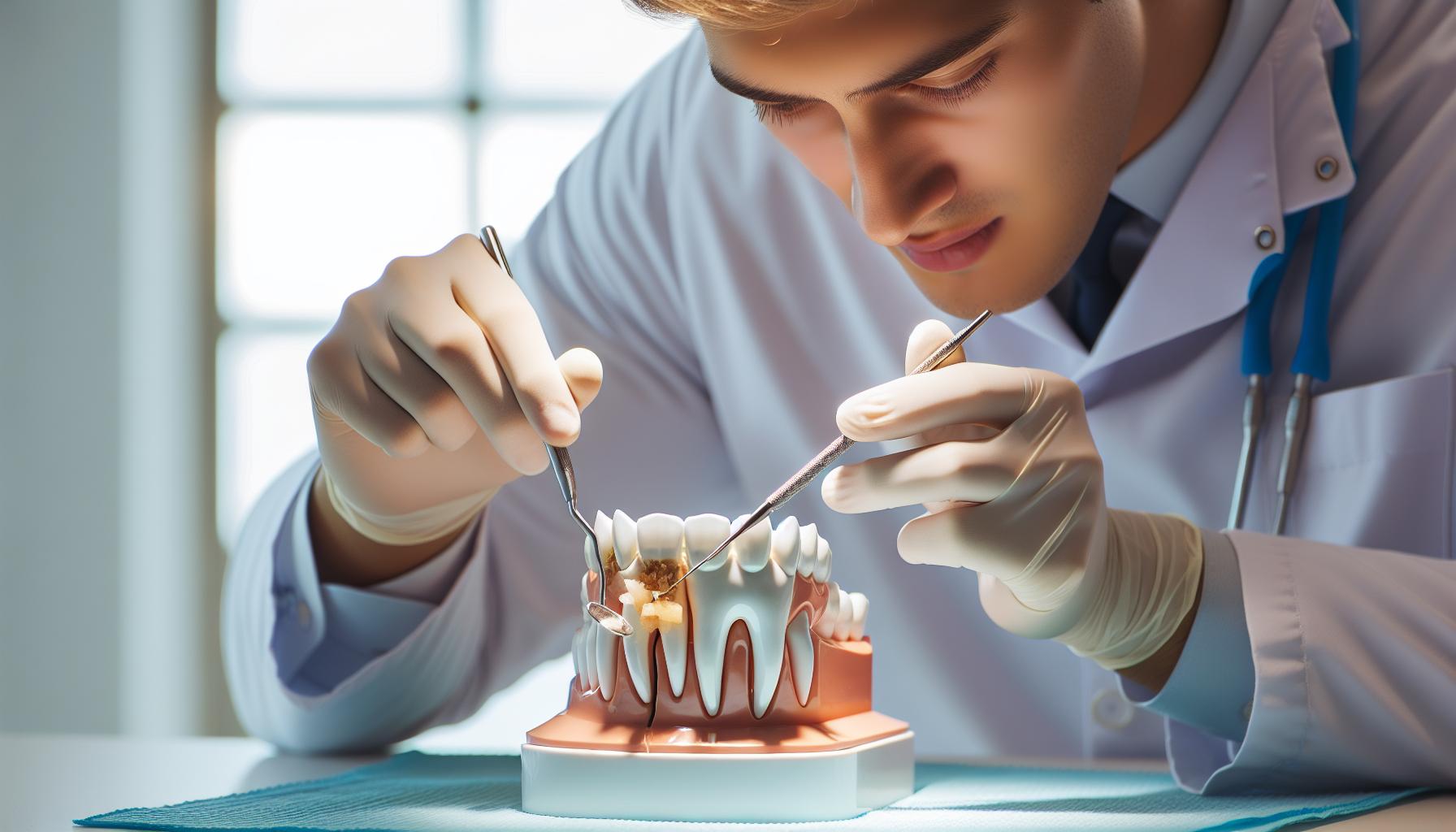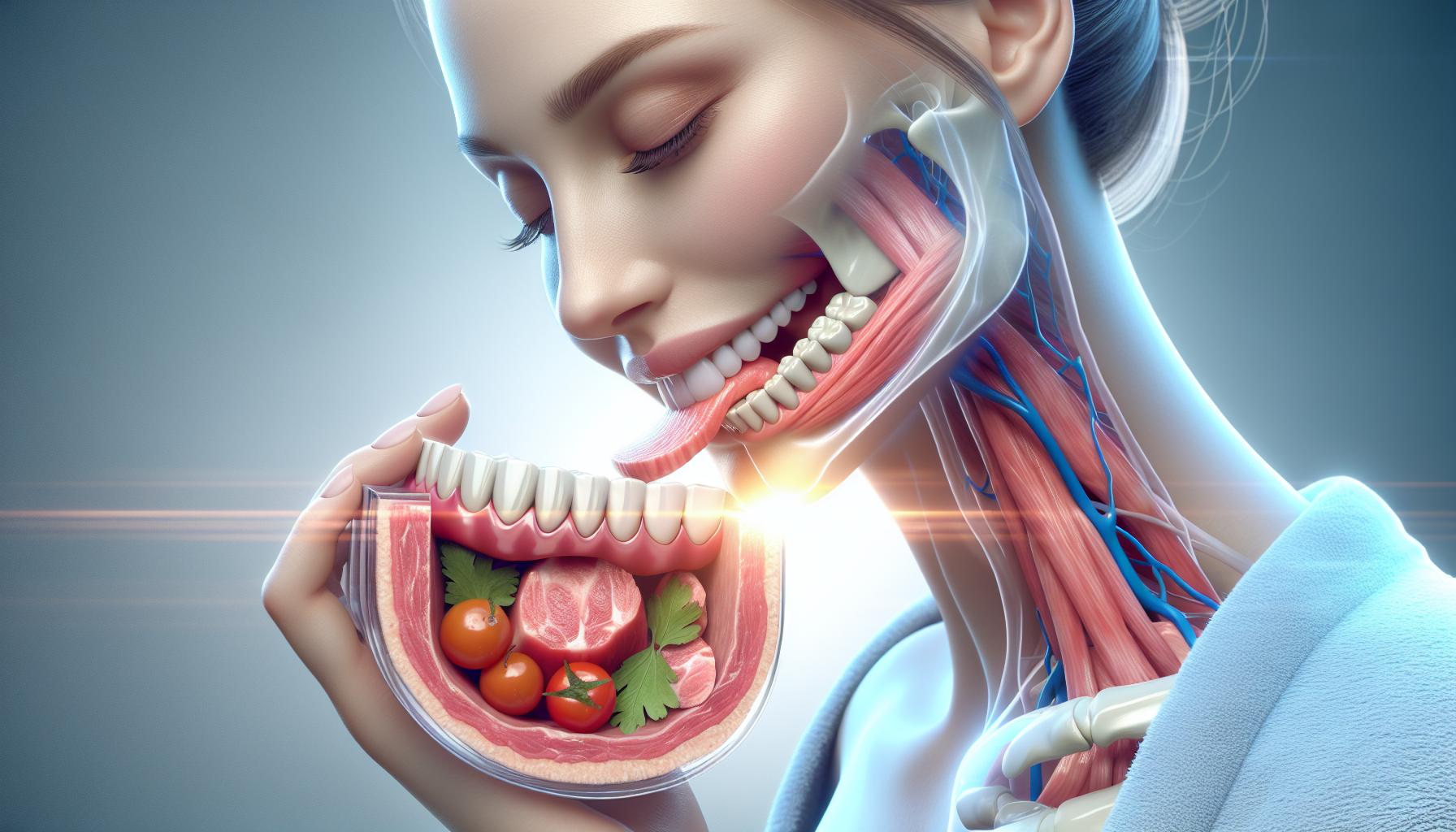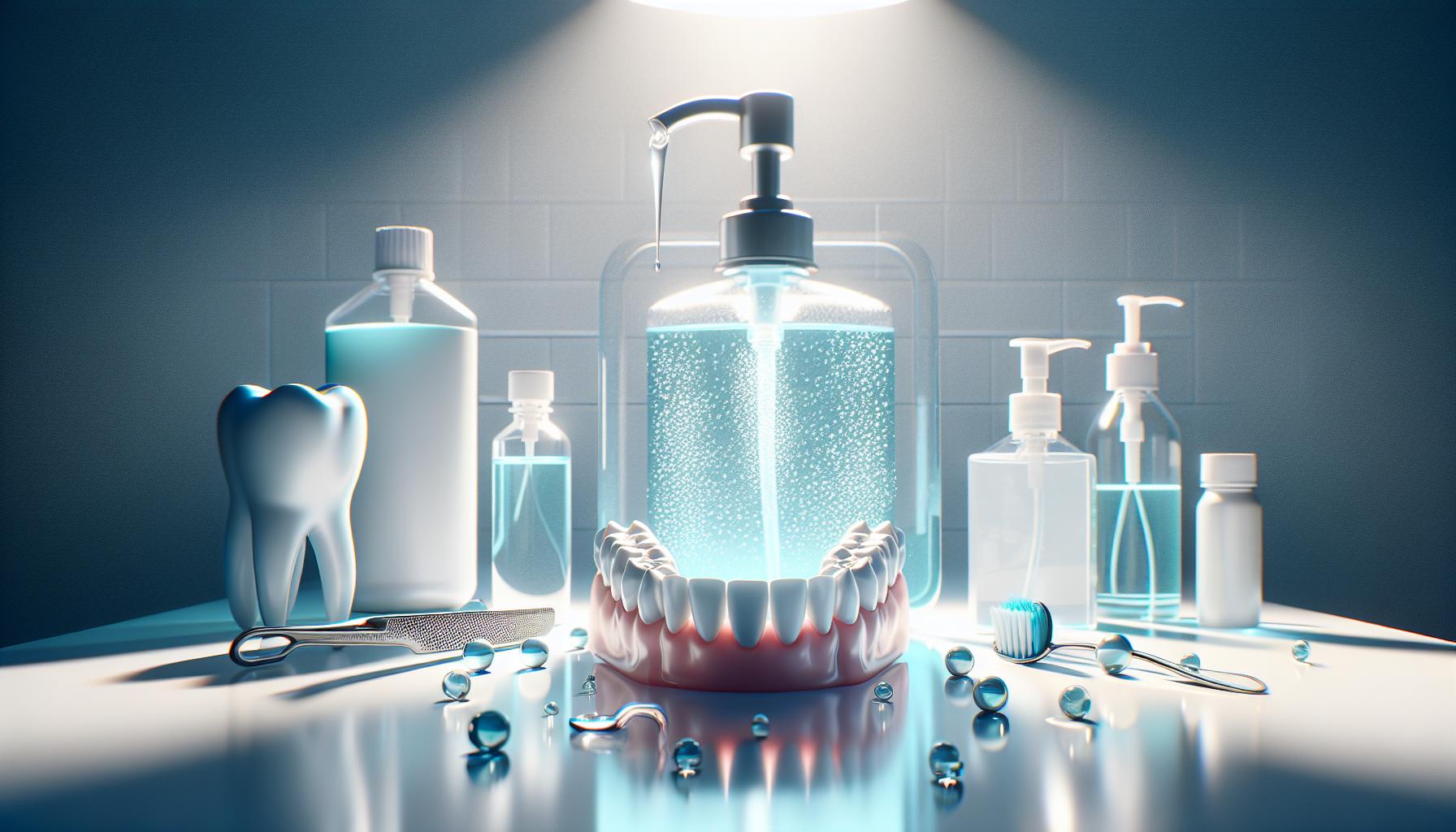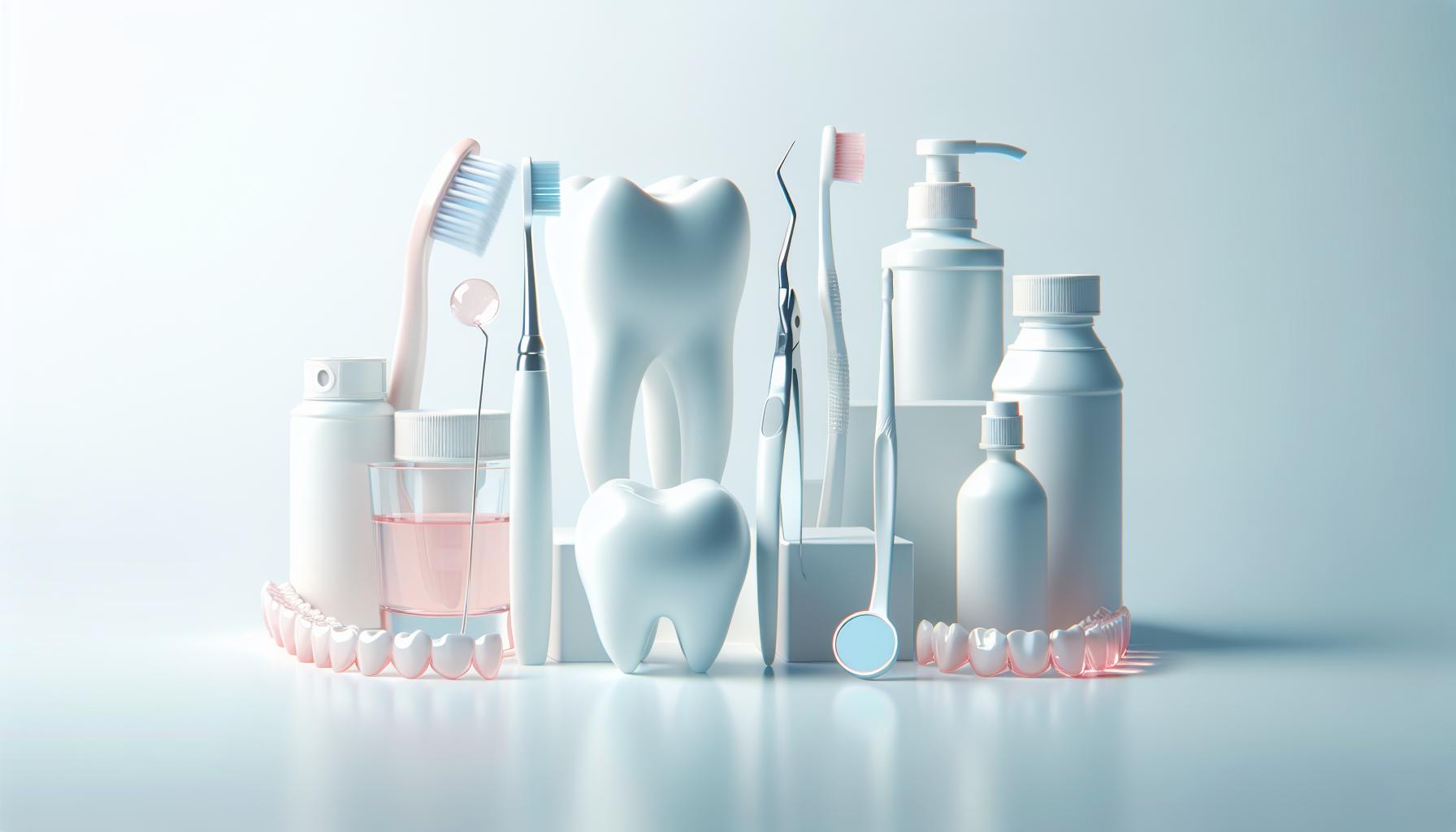We’ve all been there: savoring a tasty steak only to find ourselves battling stubborn bits of meat stuck between our teeth. While flossing is a go-to solution, sometimes it’s just not enough. Discover effective tricks and tools to tackle those pesky food remnants and ensure a confident smile, as oral hygiene matters more than ever.
Understanding the Challenge: Why Meat Gets stuck Between Teeth
Did you know that nearly 80% of adults experience food getting stuck in their teeth at some point? While this is often a minor annoyance, meat particularly poses a meaningful challenge due to its fibrous nature. Understanding the reasons behind this dental dilemma can definitely help you tackle it more effectively and ensure that mealtime remains enjoyable rather than frustrating.
### Why Meat Sticks
Meat fibers are structured in a way that makes them particularly clingy when they come into contact with teeth. Hear are a few key factors contributing to why meat gets lodged between your gums:
- Fibrous Texture: The long, stringy fibers in various meats, especially red meats like beef and pork, can easily wrap around and ensnare teeth.
- Chewing Technique: How you chew can influence whether meat gets stuck. too much force or not properly breaking down the meat can result in larger pieces finding their way between teeth.
- Gaping Spaces: Naturally occurring spaces between teeth or existing dental work can create perfect traps for food particles.
Moreover, the stickiness of sauces or marinades that accompany meat dishes can exacerbate the issue. These sticky elements cling to the fibrous meat, making it even harder to dislodge once lodged.
### Real-World Examples
Consider the classic example of a hearty barbecue meal. After indulging in a juicy pulled pork sandwich, it’s not uncommon for shreds of meat to get trapped in the tight spaces between teeth. This scenario is made even trickier when enjoying spicy or sticky barbecue sauces that adhere to both the meat and your enamel. If you’re left without your trusty floss or toothbrush readily available, mastering how to get meat out of your teeth becomes essential.
Understanding these dynamics is a vital part of developing effective strategies. By recognizing what makes specific foods challenging, you can be better prepared with alternative solutions when traditional flossing doesn’t suffice.
When Floss Falls Short: Exploring Alternative Solutions
In the quest for maintaining oral hygiene, it’s all too common to find yourself in a frustrating situation where stubborn pieces of meat refuse to budge, despite your best efforts with floss.While dental floss is often hailed as a superhero for oral care, it’s not always up to the task when you encounter larger or more persistent food particles. For those moments when traditional floss falls short, exploring alternative solutions becomes paramount.
Understanding Limitations of Dental floss
Floss is designed to slide between teeth and remove debris effectively; however, its design may not be suitable for certain types of food, particularly if they become lodged deep between tight spaces. Items like shredded beef or fibrous vegetables can create a sticky bond that standard floss simply can’t break. this is where alternative cleaning methods can offer a new lease on dental hygiene.
Effective Solutions to Clear Meat from Teeth
When floss isn’t enough, consider implementing these strategies for effective removal of meat particles:
- Interdental Brushes: These small, bristled devices are designed to fit between teeth, making them an excellent choice for dislodging larger bits of food that floss might miss. They come in various sizes to accommodate different gaps.
- Water Flossers: utilizing high-pressure streams of pulsating water, these devices can flush out food particles trapped between teeth. studies have shown that they can be more effective than traditional flossing for certain individuals.
- Toothpicks or Dental Picks: Wooden or plastic toothpicks can be a handy tool for carefully dislodging food. Dental picks are designed specifically for this purpose and can often reach areas that are hard to floss.
- Saltwater Rinse: Swishing a solution of warm saltwater in your mouth can help loosen food remnants and provide an antibacterial effect that promotes gum health.
Additional Considerations
For those employing these alternative methods, it’s essential to follow up with good oral hygiene practices to ensure your mouth stays healthy. Here’s a simple table summarizing best practices when you find food stuck in your teeth:
| Method | How to Use | Benefits |
|---|---|---|
| Interdental Brushes | Gently slide between teeth | Effective for larger gaps and firmer debris |
| Water Flossers | Point the nozzle between teeth and activate | Cleans deep pockets without direct contact |
| Toothpicks or Dental Picks | Carefully use to dislodge food | Immediate removal for stubborn items |
| Saltwater Rinse | Swish around the mouth for 30 seconds | Soothes gums and helps reduce inflammation |
With these strategies in your toolkit, you can ensure that even when floss falls short, your oral care routine remains effective and thorough, empowering you to keep your smile fresh.
Everyday Tools: Innovative Techniques to Remove Stuck meat
When it comes to enjoying a hearty meal, nothing can ruin the moment quite like getting meat stuck between your teeth. The discomfort can be distracting and, at times, quite embarrassing. Fortunately,there are plenty of everyday tools and innovative techniques to help you tackle this pesky problem when floss just doesn’t cut it.
household Heroes: Your Everyday Solutions
You don’t always have to rely on commercial dental products to dislodge meat from your teeth. Here are some innovative techniques using common household items:
- Toothpicks: A classic tool, toothpicks can be highly effective for removing stubborn bits of food. Choose wooden or plastic options (or pre-flavored versions for a posh twist!) and gently work the pick between your teeth to eliminate the remains.
- Paper Clips: In a pinch, a straightened paper clip can serve as an impromptu dental tool. Be sure to sanitize it frist! Once prepared, wrap a small piece of tissue around one end to shield your gums and maneuver it carefully in your mouth.
- String or Thread: If you find yourself without traditional floss, a strong piece of string or thread can do the trick. Just ensure it’s clean and devoid of lose fibers before using it to dislodge food particles.
snack Time: Get Creative with Food
Interestingly, certain foods can assist in cleaning your teeth. Some can even act as natural brushes, helping to dislodge meat without any extra tools. For example,consider munching on:
| Food Item | How It Helps |
|---|---|
| Apples | The fibrous texture can help scrub away bits. Plus, they stimulate saliva production. |
| Carrots | Crisp and crunchy, they can mechanically clean teeth when chewed. |
| Celery | The high water content and crunchy texture can aid in rinsing food particles away. |
These natural snacks not only promote dental health but are great for adding more nutrients to your diet.
The Power of DIY Rinses
Sometimes, a strategic rinse can make all the difference. Creating your own mouthwash using common ingredients can help dislodge meat remnants and refresh your breath. consider these simple recipes:
- Saltwater rinse: Mix warm water with a teaspoon of salt and swish it in your mouth. This can reduce inflammation and help loosen food particles.
- Apple Cider Vinegar Solution: Dilute one part vinegar with two parts water and swish for a cleansing effect. However,use sparingly as it is acidic and can affect tooth enamel.
- Hydrogen Peroxide Rinse: mix equal parts hydrogen peroxide and water for a mouthwash that can kill bacteria while promoting gum health. Remember to spit it out, as swallowing hydrogen peroxide isn’t safe.
Arming yourself with these practical tips and innovative tools will not only help tackle the dilemma of removing stuck meat but also promote overall oral hygiene. So the next time you’re left wondering how to get meat out of your teeth when floss isn’t enough, remember these inventive solutions!
The Role of Mouthwash: Bonus Benefits Beyond Freshness
The everyday ritual of rinsing with mouthwash dose far more than simply banish bad breath—it lays the foundation for a healthier mouth. Whether you’ve just enjoyed a hearty steak dinner or a delightful barbecue, mouthwash can play an invaluable role in your oral hygiene routine, especially when you find remnants of meat stuck between your teeth.
The Benefits of Incorporating Mouthwash into Your Oral Care Routine
While its primary purpose is to freshen breath, mouthwash offers a treasure trove of additional benefits that can keep your dental hygiene in tip-top shape. here are some of the bonus benefits you can glean from using mouthwash regularly:
- Germ Defense: Many mouthwashes contain antimicrobial agents, such as chlorhexidine or cetylpyridinium chloride, that help eliminate bacteria in your mouth. This is particularly beneficial for preventing gum disease and halting the growth of harmful plaque.
- Enhanced Cleaning: While flossing is essential for removing food particles stuck between teeth, mouthwash can wash away loosened debris, particularly when it comes to stubborn meat fibers. This dual approach ensures you’re leaving no residue behind.
- Whitening Properties: Certain types of mouthwash are formulated with whitening agents that can reduce stains on your teeth, giving you that radiant smile while also combating any discoloration that may result from rich foods.
- Fighting Bad Breath: A mouthwash can neutralize odors more effectively than simply brushing your teeth or chewing gum, providing a long-lasting freshness that remains even after meals.
Choosing the Right Mouthwash
Not all mouthwashes deliver the same benefits, so it’s vital to choose one that aligns with your needs. When selecting a mouthwash, consider the ingredients listed on the label. Such as:
| Ingredient | Benefit |
|---|---|
| chlorhexidine | Potent antibacterial properties,great for treating gingivitis. |
| Fluoride | Helps strengthen enamel, reducing the risks of cavities. |
| Alcohol | Generally effective against bacteria but can dry out the mouth. |
| Natural extracts (like Tea Tree or Peppermint) | Offer antimicrobial properties without synthetic additives. |
Understanding these ingredients can provide a better grasp of how to get meat out of your teeth when floss isn’t enough. Incorporating mouthwash not only aids in keeping your mouth clean but also fortifies your dental health in more ways than you might expect. so, next time you sit down for a meal, remember that a rapid rinse coudl be your secret weapon for both cleanliness and freshness.
Natural Remedies: Home Solutions for Stubborn Food Particles
in the battle against stubborn food particles stuck between your teeth, traditional flossing might not always do the trick. For those instances when you find yourself wondering how to effectively get meat out of your teeth,home remedies can offer efficient and natural alternatives. Integrating these solutions into your oral hygiene routine can lead to improved dental health and enhanced comfort.
Common Natural Remedies
Certain household items can serve as effective tools for dislodging pesky food bits. consider the following options:
- Water Flossing: Use a water flosser to gently flush out any food debris. The pressure of the stream can often remove particles that traditional flossing misses.
- Saltwater Rinse: Mix a teaspoon of salt in warm water and swish it around your mouth. This not only helps dislodge food particles but can also reduce inflammation and promote healing of the gums.
- Toothpicks: Wooden toothpicks or inter-dental brushes can be effective for gently scraping away larger food chunks without causing damage to your gums, they should be used carefully to avoid injury.
- Chewing Gum: Sugar-free gum can increase saliva flow, which helps to naturally wash away food residue and neutralize acids.
Herbal and Natural Solutions
Incorporating certain herbs into your oral health maintenance can also be beneficial:
- Clove Oil: Known for its antiseptic properties, a couple of drops of diluted clove oil applied with a cotton swab can help soothe any irritation while aiding in dislodging particles.
- Tea Tree Oil: This essential oil has antibacterial properties. Dilute a few drops in water and use it as a mouthwash to help dislodge food and prevent bacterial growth.
- mint leaves: Chewing fresh mint leaves not only freshens your breath but may also help dislodge food trapped between your teeth.
Preventive Measures
To reduce the occurrence of food particles getting stuck in the first place, consider these preventive practices:
| Tips for Prevention |
|---|
| Choose foods wisely; harder foods can cause particles to become lodged. |
| Maintain proper oral hygiene with regular brushing and flossing. |
| Visit your dentist regularly for check-ups and cleanings. |
By integrating these natural remedies into your regimen, you’ll be better equipped to handle those irritating moments when food seems to cling stubbornly to your teeth. Whether it’s thru a quick rinse, a gentle tool like a toothpick, or the power of nature’s herbs, you can maintain your oral comfort effectively and naturally.
When DIY Techniques Aren’t Enough: Recognizing the Need for Professional Help
Did you know that stubborn bits of meat lodged between your teeth can lead to serious dental issues if not addressed properly? It’s often a nuisance that can escalate into discomfort or even pain, reminding us why some situations call for more than just home remedies. While many people resort to using floss, toothpicks, or even water flossers, there are circumstances where these DIY techniques may fall short, making it crucial to recognize when professional intervention is necessary.
Signs That Dental Expertise is Required
In some cases, despite your best efforts, you may find that you can’t dislodge the stubborn debris—leading to discomfort in your mouth. Here are some key indicators that professional help is warranted:
- Persistent Discomfort: If you experience ongoing pain,swelling,or sensitivity in the gum area,it may signal the presence of infection or inflammation.
- Chronic Bad Breath: Halitosis that doesn’t resolve even after brushing, mouthwash, or flossing can indicate decaying food particles trapped in hard-to-reach areas.
- Visible Swelling or Bleeding: Noticing redness or bleeding when eating or brushing may suggest your gums are irritated or infected.
- Intensified Sensitivity: Increased sensitivity to hot and cold foods or beverages may indicate that the tooth structure is compromised.
When to Seek Professional Assistance
Understanding when to turn to a dentist can save you from significant discomfort and long-term dental issues. If you find yourself consistently grappling with these annoying morsels, consider these practical steps:
- Book Regular Check-ups: Preventative dental visits ensure that small issues don’t turn into dental crises. A dentist can remove plaque and debris more effectively than home methods can.
- Request a Cleaning: If you’ve already tried various methods without success, a professional cleaning may be the most effective way to ensure your dental health.
- Evaluate Underlying Conditions: Persistent issues could stem from misalignment, cavities, or gum disease. Educating your dentist about your experiences can help them diagnose any underlying problems requiring treatment.
exploring Professional Solutions
Once you’ve recognized the signs and decided to seek help, various professional solutions are available. These may include:
| Solution | Description |
|---|---|
| Dental Cleaning | A thorough cleaning by a dental hygienist removes plaque, tartar, and food residuals from your teeth effectively. |
| Scaling and Root Planing | This deep cleaning procedure targets gum disease, smoothing out the root surfaces to promote healing. |
| Dental Laser Therapy | Lasers can be used to remove tissue or debris gently and can promote healing in inflamed gums. |
Recognizing that DIY techniques are not always sufficient empowers you to take control of your dental health. By assessing your situation and taking the steps necessary to address it professionally, you can avoid further complications and enjoy a healthier mouth free from the agonies of trapped food.
Building a Better dental Routine: Preventing Food Debris Before It Happens
Starting each day with a smile is not just about the aesthetics; it’s a reflection of a well-maintained dental routine. did you know that the crumbs of your favourite meals could be contributing to your dental woes? Food debris, especially from fibrous or sticky foods like meat, can easily become trapped between teeth, leading to irritation and long-term dental issues if not managed effectively.
Proactive strategies for a Cleaner Mouth
One of the best ways to prevent food debris from turning into a dental nightmare is to adopt a proactive approach to your oral hygiene. Here are some practical steps to consider:
- Choose Wisely: When selecting your meals, consider the types of food that tend to stick in your teeth.Opt for less fibrous meats or softer options that are easier to chew and swallow. This small change can greatly reduce the amount of debris that lingers in your mouth.
- Drink Water: Keeping yourself hydrated not only benefits your overall health but also helps wash away food particles after meals. Drinking water after eating, especially if you’ve had meat, acts as a natural rinse for your mouth.
- Incorporate Crunchy Foods: Foods that require chewing, such as apples, carrots, or celery, can assist in cleaning your teeth naturally. They stimulate saliva production, which is crucial for neutralizing acids and dislodging trapped food.
Regular Maintenance: The Cornerstone of Oral Hygiene
An effective dental routine goes beyond brush and floss. Think of it as a complete system to keep your mouth healthy.Here’s a snapshot of how to establish a routine that keeps food debris at bay:
| Task | Frequency | Additional Tips |
|---|---|---|
| Brushing | Twice daily | Use fluoride toothpaste and a soft-bristled toothbrush. |
| Flossing | Once daily | Floss before brushing for added removal of debris. |
| Mouthwash | Daily | Opt for fluoride mouthwash for added protection. |
| dental Check-ups | Every 6 months | Professional cleanings can help remove stubborn debris. |
This routine not only prepares your mouth for the certain food particles but also builds resilience against plaque and decay. In combination with dietary choices, this holistic approach can help you learn how to get meat out of your teeth before it becomes a problem. Remember, prevention is always better than cure, and a little effort can lead to significant improvements in your dental health!
Empowering Your Smile: Proactive Steps for Long-Term Dental Health
Did you know that nearly half of the world’s population struggles with oral health issues, including the ever-present challenge of food debris stuck between teeth? it’s important to address these occurrences proactively, as they can lead to dental problems like gingivitis, cavities, and other forms of dental caries if not managed properly. While traditional flossing is often the go-to method for cleaning between teeth, there are several practical steps to consider for maintaining long-term dental health and ensuring your smile stays bright and healthy.
Adopt a Comprehensive Oral Care Routine
To empower your dental health, it’s essential to establish a thorough oral care regimen. Start with the basics: brush your teeth twice a day with fluoride toothpaste, and don’t forget to replace your toothbrush every three to four months.Though, toothbrushing alone may not be sufficient, especially when you’ve enjoyed a hearty meal that leaves remnants behind.
Consider using alternative tools to combat stubborn bits of food. Here are some effective options:
- Interdental brushes: These small brushes are ideal for reaching areas floss may miss and can be more effective at removing food particles.
- water Flossers: Devices like water picks use a stream of pulsating water to remove debris and plaque from between teeth, making them a popular choice for those who find traditional flossing challenging.
- Dental Picks: Disposable or reusable dental picks can also help in dislodging food, especially when you are on the go.
Stay Hydrated and Choose Your Foods Wisely
Maintaining hydration is a key aspect of oral health that is frequently enough overlooked. Drinking sufficient water helps wash away food particles and neutralizes acids produced by bacteria in the mouth.Aim for at least eight glasses a day, and consider following up meals with a sip of water to help clear out residues.
It’s equally vital to be mindful of the foods you consume. Sticking to a diet rich in fibrous fruits and vegetables not only supports general health but assists in naturally cleaning teeth while you eat. Foods such as apples, carrots, and celery can act like natural toothbrushes, reducing plaque accumulation and promoting gum health.
Routine Dental Check-Ups
Regular visits to your dentist are an indispensable component of long-term dental health. Dentists can provide professional cleanings and early intervention for any emerging issues.It’s advisable to schedule check-ups at least twice a year. During these visits, discuss any problems you’re experiencing, such as persistent debris removal issues. Your dentist can recommend specialized techniques or products tailored to your unique dental needs.
For those who struggle with removing stubborn food particles after meals, adapting the suggestions from “How to Get Meat Out of Your Teeth: Solutions When Floss Isn’t enough” can not only enhance your daily oral hygiene routine but also safeguard your health in the long term. By proactively addressing oral health challenges, you can ensure your smile remains vibrant and free from the perils of dental decay.
Frequently Asked Questions
How to Get Meat Out of Your Teeth: solutions When Floss Isn’t Enough?
To get meat out of your teeth when floss isn’t enough, try using a toothpick, dental proxy brush, or a water flosser. These tools can help dislodge stubborn pieces of food safely and effectively.
if floss is insufficient, a toothpick is a simple option that can reach arduous areas. A dental proxy brush can also be more effective as it fits between teeth better than regular floss. Additionally, a water flosser can blast away food particles using pulsating streams of water, making it a great alternative.
What is the best tool for removing meat from teeth?
The best tools for removing meat from teeth include toothpicks, dental brushes, and water flossers. Each tool has unique advantages depending on the food stuck and your comfort level.
Toothpicks can work well for larger pieces,while dental brushes are effective for gaps between teeth. Water flossers can be especially useful as they provide a gentle stream of water to flush debris out, making them an excellent option for those sensitive to traditional floss.
Why does food get stuck between my teeth?
Food often gets stuck between teeth due to tooth alignment and gaps in dental structure. Irregularities in the shape of teeth can create spaces where food particles can lodge.
Additionally, certain foods, like meat, tend to shred and adhere easily to tooth surfaces. Regular dental check-ups can definitely help identify underlying issues and ensure your teeth and gums are healthy, reducing the likelihood of food impaction.
Can I use any household items to remove food from my teeth?
You can use certain household items like a soft cloth or a interdental brush as alternatives to traditional dental tools. Though,be cautious not to damage your gums.
Such as, wrapping a soft cloth around your finger can help you gently wipe away food particles. Still, items like needles or sharp objects should be avoided to prevent injury. If you need guidance,consider consulting with a dental professional for personalized advice.
What should I avoid when removing food from my teeth?
When trying to remove food from your teeth,avoid using sharp or pointed objects,as these can cause gum injury or dental damage. Instead, use safe dental products designed for this purpose.
It’s important to remember that pushing too hard can worsen the situation or introduce bacteria into your gums. If food remains stuck after gentle attempts, visiting a dentist might be the best solution for proper removal.
How often should I clean between my teeth?
It’s essential to clean between your teeth at least once a day, ideally before bedtime, to prevent buildup of food particles and plaque. Developing a regular routine can significantly improve your dental health.
This practice, combined with brushing twice a day, helps maintain oral hygiene and reduces the risk of cavities and gum disease. For specific guidance, you can also read our article on dental care tips.
What are the symptoms of food stuck between teeth?
Symptoms of food stuck between teeth include discomfort, a feeling of pressure, and potential swelling of the gums. You might also notice persistent bad breath or tenderness in the area.
If left untreated, food impaction can lead to more severe dental problems such as cavities or infections. If you experience ongoing discomfort, it’s essential to consult a dentist to ensure there are no underlying issues.
to Conclude
navigating the challenges of getting meat out of your teeth can be simple and manageable with the right tools and techniques. From exploring specialized dental tools like interproximal brushes and oral irrigators to understanding the importance of routine dental care, you’ve now armed yourself with practical solutions. remember, while everyday items can provide immediate relief, don’t hesitate to consult your dentist for those stubborn situations.Empower yourself to smile confidently by taking these proactive steps—your dental health is in your hands! Dive deeper into dental care, and share your experiences or questions in the comments below; together, we can cultivate better oral hygiene habits for a brighter, healthier future!









